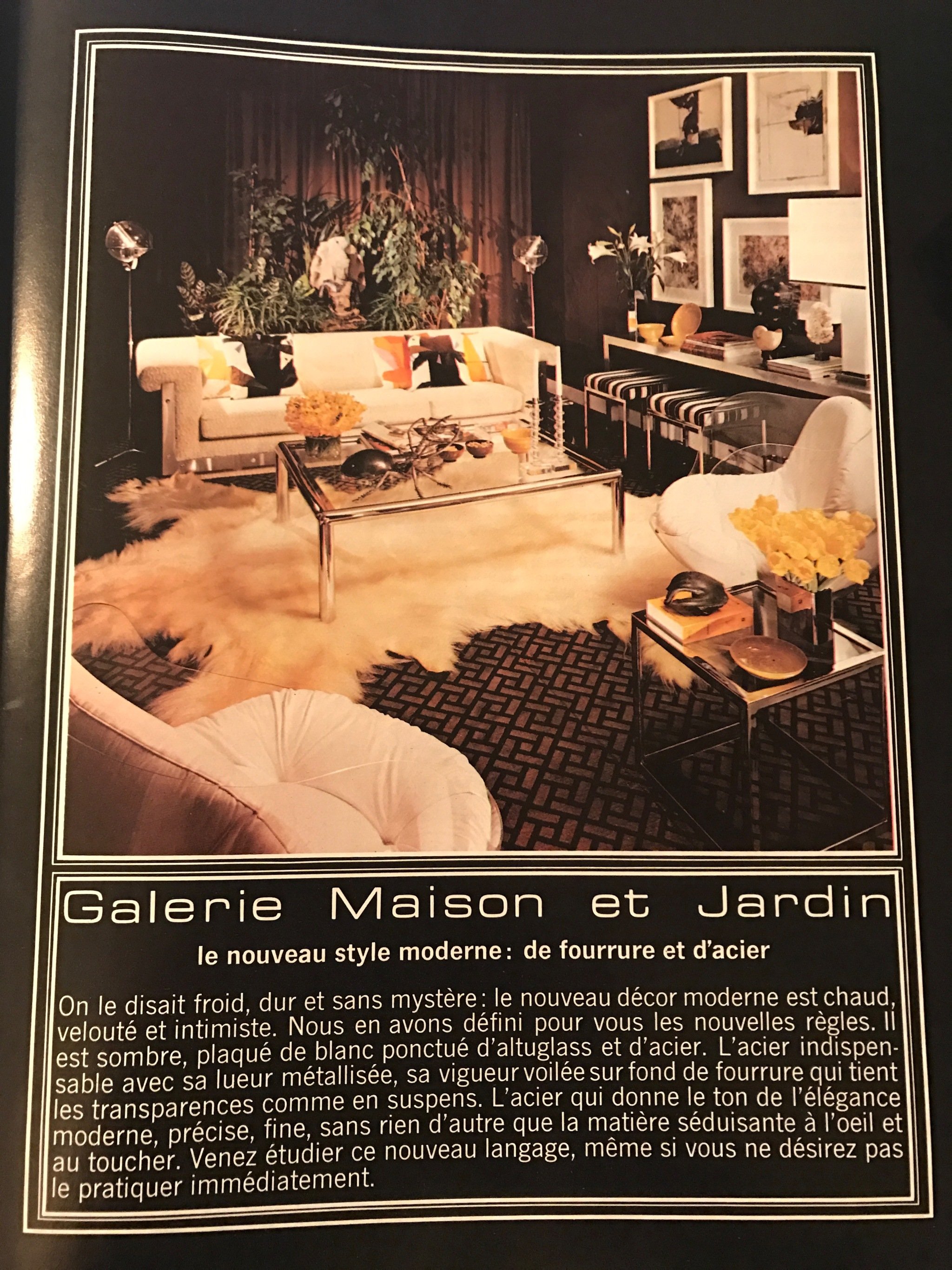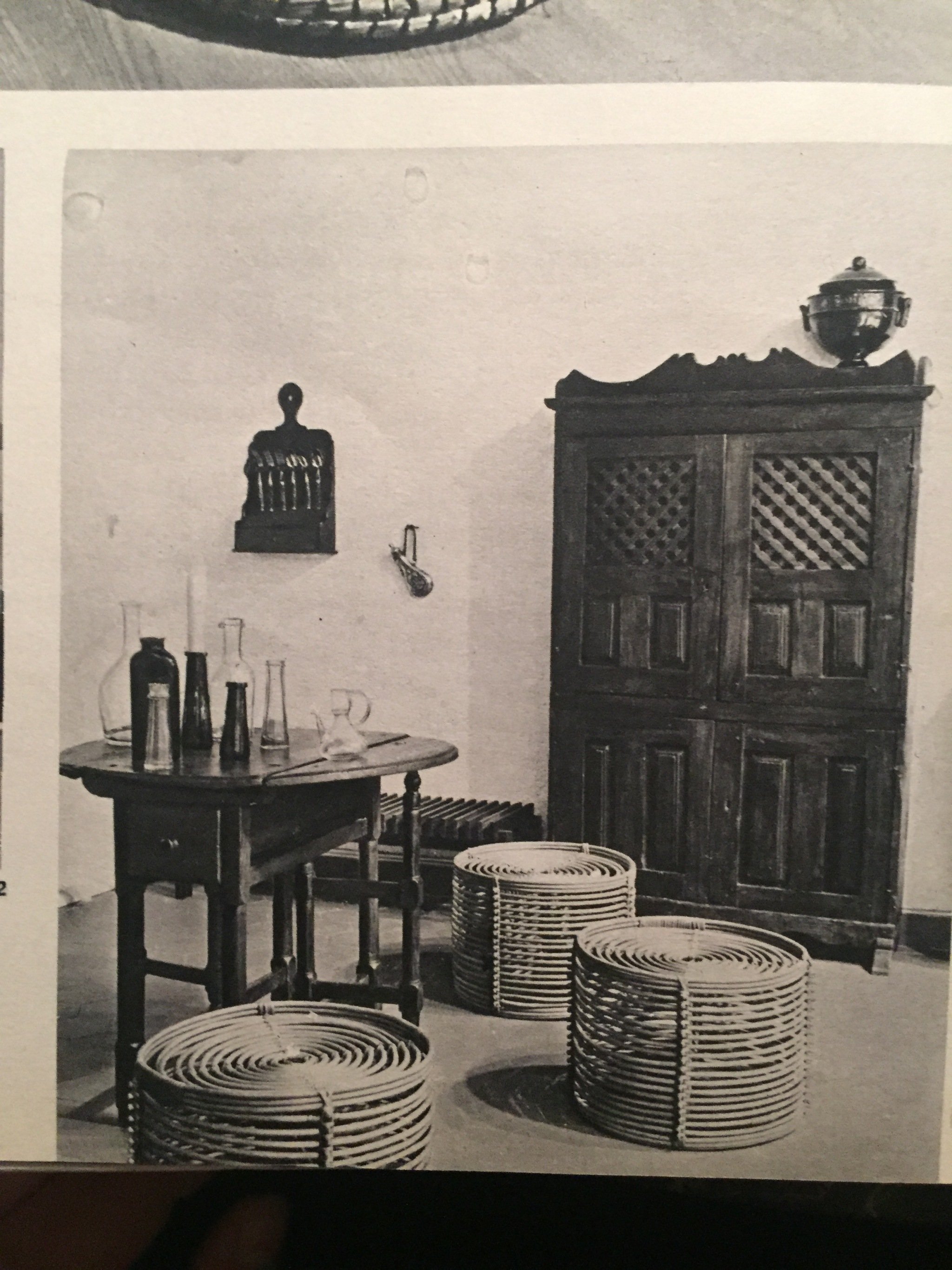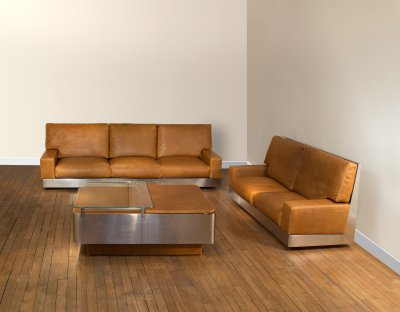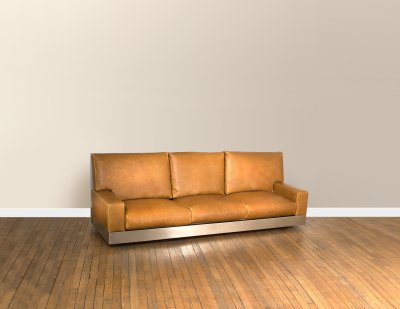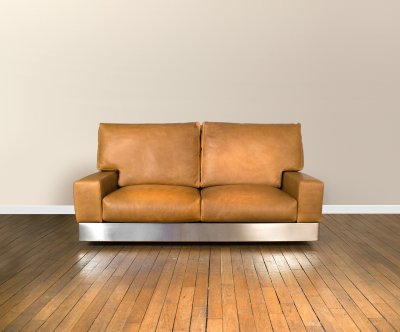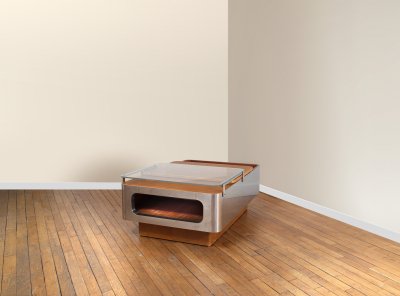Galerie Maision et Jardin
Founded in 1951, in the heart of the Faubourg Saint-Honoré, Galerie Maison et Jardin quickly distinguished itself as a unique place, animated by both refinement and boldness. In a Paris still marked by the shadows of war, it appeared as a promise of renewal: a space where the art of living could be reimagined, where every piece of furniture, every object, every light entered into dialogue to compose a harmonious vision of the everyday.
From its beginnings, the gallery embraced a dual ambition: to celebrate the craftsmanship of French artisans while opening its doors to a modernity unafraid of purity and experimentation. It is this delicate balance—between heritage and invention—that forged its identity and prestige.
The 1960s brought a decisive shift. Maison et Jardin became the stage for a profound aesthetic upheaval. In 1968, it revealed to the public Maria Pergay’s stainless steel furniture, transforming an industrial material into creations that were sensual, almost sculptural. This act of courage and foresight inscribed the gallery into design history: no longer merely an exhibition space, it had become a laboratory of ideas, a dialogue between past and future.
What sets Maison et Jardin apart is its philosophy of staging. More than a display, each presentation was a composition: objects were never shown in isolation, but as parts of a greater universe. Colors, materials, and forms conversed with one another; the whole breathed like an ideal home, a poetic yet concrete vision of the art of living. Here, furniture was not simply functional—it carried emotion, culture, and style.
Through the decades, the gallery maintained this rare ability to unite rigor with freedom, tradition with daring, intimacy with radiance. It accompanied the great movements of its time while remaining faithful to its role as a conduit: transmitting a demanding vision of beauty, sensitivity, and the essential.
Even today, the name Maison et Jardin evokes far more than a Parisian gallery. It resonates as a symbol—of a meeting ground between master artisans and visionary creators, of a decorative art unafraid to reinvent itself, and of a Paris that continues, between heritage and modernity, to imagine itself as the capital of elegance.
